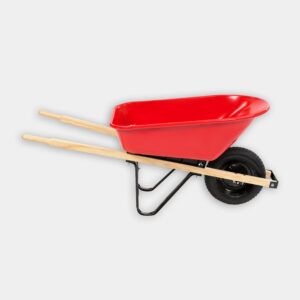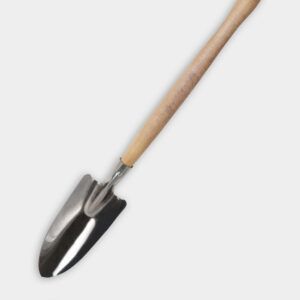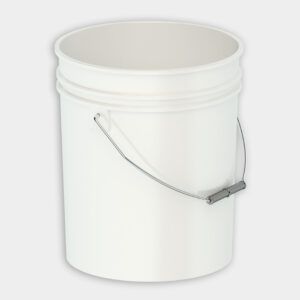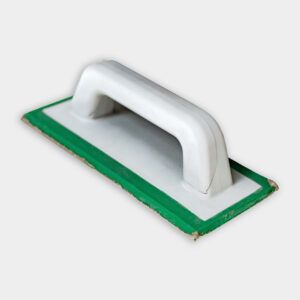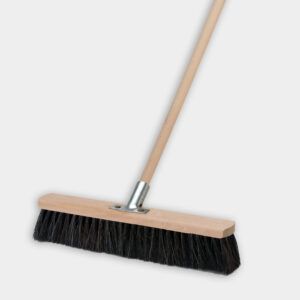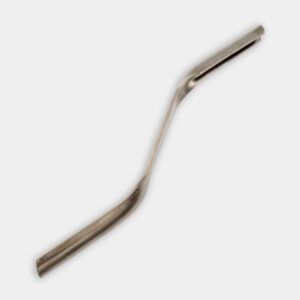Project details
Skill
Cost
Estimated Time
Concrete is a durable material used in many construction projects. If you’re planning to pour a new walkway, build a retaining wall, or tackle other masonry tasks, knowing how to work with concrete is a must. In the video above, This Old House host Kevin O’Connor and landscaping expert Roger Cook demonstrate how to mix and pour concrete for a walkway. We’ll cover the process step-by-step plus other concrete basics in our guide.
Concrete Components
Concrete is a mixture of several ingredients that work together to create a strong, long-lasting material. Here are some variations:
Portland Cement
Portland cement is the main ingredient in most masonry mixes, including cement, concrete, and mortar. This fine powder acts as the adhesive that binds the other components together, creating a strong and long-lasting final product.
Sand and Aggregate
Sand and aggregate (gravel) are the other primary components of concrete. The sand fills in the gaps between larger particles, while the aggregate gives strength and structure to the mix. When the concrete cures, the aggregate binds with the other ingredients, resulting in a sturdy material.
Water
Water is the final ingredient in concrete. It activates a chemical reaction in the Portland cement, allowing it to bind with the sand and aggregate. The right amount of water is important for achieving the proper consistency and integrity of the final product.
Different Types of Masonry Mixes
Depending on the project, you may need different types of masonry mixes. Here are the most common types and their applications:
Concrete Mix
Concrete is composed of Portland cement, sand, and aggregate. It’s ideal for projects like walkways, slabs, and foundations. To make your own concrete mix, use 3 parts sand, 2 parts gravel, and 1 part Portland cement.
Mortar Mix
Mortar, used to build brick and concrete-block walls, is made of portland cement, lime, and sand. It contains no gravel. The lime makes mortar sticky so it adheres better to the brick or block, and it also makes cured mortar less likely to crack. The lack of aggregate makes mortar fit evenly into smaller spaces, like when sealing stones together.
Portland Cement Mix
Portland cement mix is used for below-grade brick and block walls. It’s a simple mortar mix of only portland cement and sand, without lime or aggregate. This mix is ideal for applications that need moisture resistance.
Mixing Concrete
Proper mixing is key for achieving the right consistency and strength in your concrete. Here’s a step-by-step guide to mixing concrete by hand:
- Gather your materials: sand, portland cement, gravel, and water.
- Use a bucket to create accurate measurements. A 1- or 2-gallon bucket works well for mixing the dry ingredients.
- Add one part sand, 1 part Portland cement, and 1-part gravel to a wheelbarrow.
- Blend the dry ingredients well with a pointed shovel.
- Add the remaining dry ingredients—2 parts sand and 1-part gravel—and mix thoroughly.
- Smooth out the dry concrete mix in the wheelbarrow and create a small hole in the center.
- Partially fill a 5-gallon bucket with water, then pour about a quart into the center of the dry mix.
- Mix well with the shovel, adding small amounts of water and mixing again until the concrete reaches a cookie dough-like consistency.
- If the mix is too dry, add a bit more water. If it’s too wet, add more dry mix in the proper proportions.
For larger projects, consider renting an electric or gas-powered cement mixer to save time and effort.
Preparing the Site and Pouring Concrete
Before pouring concrete, you’ll need to prepare the site. Follow these steps for a successful pour:
- Excavate the area where you’re planning to pour the concrete. Dig down to solid, undisturbed earth.
- Build a wooden form out of 2x boards to hold the concrete in place until it cures. Fasten the boards together with 3-inch deck screws.
- Add several inches of 3/4-inch stone to the form and compact it well with a plate compactor or hand tamper.
- Carefully dump or shovel the concrete from the wheelbarrow into the form, filling it about halfway.
- Smooth out the concrete, then lay down some 1/2-inch (No. 4) metal reinforcing bar or welded wire mesh to add structural strength.
- Mix more concrete if necessary and fill the form to the top.
Concrete Finishing Techniques
You’ll need to properly finish your concrete to preserve its appearance and durability. Here are some techniques to consider:
Smooth the Surface
Use a steel float to smooth out the surface of the concrete. This creates a level, even surface and helps to consolidate the mix.
Add Texture
After allowing the concrete slab to dry for about an hour, lightly drag a push broom across its surface to add texture. This improves traction and can boost the finished product’s appearance.
Edge and Groove
Run an edger around the slab perimeter to round over its edges. This improves the appearance and also helps prevent chipping. For larger slabs and walkways, use a groover to cut control joints into the still-soft concrete. These joints help control cracking as the concrete cures and settles.
Concrete Curing and Aftercare
Proper curing is required for strong and durable concrete. Allow the concrete to cure for at least 24 hours before removing the form boards. After removal, backfill as necessary around the slab with soil.
For best results, keep the concrete moist for several days after pouring so it can settle. Do this by covering it with plastic sheeting or periodically misting it with water. Avoid walking on or placing heavy objects on the concrete for at least a week so it can reach its full strength.
Seal the Concrete
Consider applying a sealant to boost your concrete’s longevity and appearance. Sealing helps protect the concrete from moisture, chemicals, and wear over time. Apply a concrete sealer with a paint roller or sprayer, ensuring even coverage. Allow the sealer to dry according to the manufacturer’s instructions before exposing the surface to traffic.
Addressing Cracks
Despite your best efforts, cracks may still form in concrete over time. Address minor cracks early to prevent them from spreading. Clean out the crack, then fill it with a concrete repair caulk or epoxy. Smooth out the repair with a putty knife and allow it to cure.
Seasonal Maintenance
Inspect your concrete surfaces regularly to keep them in good shape. Clean the concrete with a pressure washer or hose, and reseal the surface as needed. During winter, avoid using de-icing salts that can be damaging and opt for sand instead.
Safety Precautions for Working With Concrete
Working with concrete involves a few safety risks. Follow these precautions to protect yourself throughout your project:
- Wear protective gear: Always wear gloves, safety goggles, and a dust mask when handling concrete materials.
- Avoid prolonged skin contact: Portland cement can cause severe skin irritation. Rinse off any concrete that comes into contact with your skin immediately.
- Handle tools safely: Carefully use tools like shovels, wheelbarrows, and mixers and ensure they’re in working condition.
- Work in a well-ventilated area: When mixing concrete indoors, check that you have proper ventilation to avoid inhalation of dust and fumes.
- Dispose of waste properly: Clean up and dispose of leftover concrete and materials per local regulations.
Our Conclusion
Working with concrete can be a challenging but fun DIY project when done correctly. If you understand the components, mixing techniques, and finishing methods, you can create durable and attractive concrete structures for your home. Remember to take your time, measure accurately, and follow proper curing procedures for the best results.
Tools
You may choose to rent a concrete mixer and a plate compactor.
